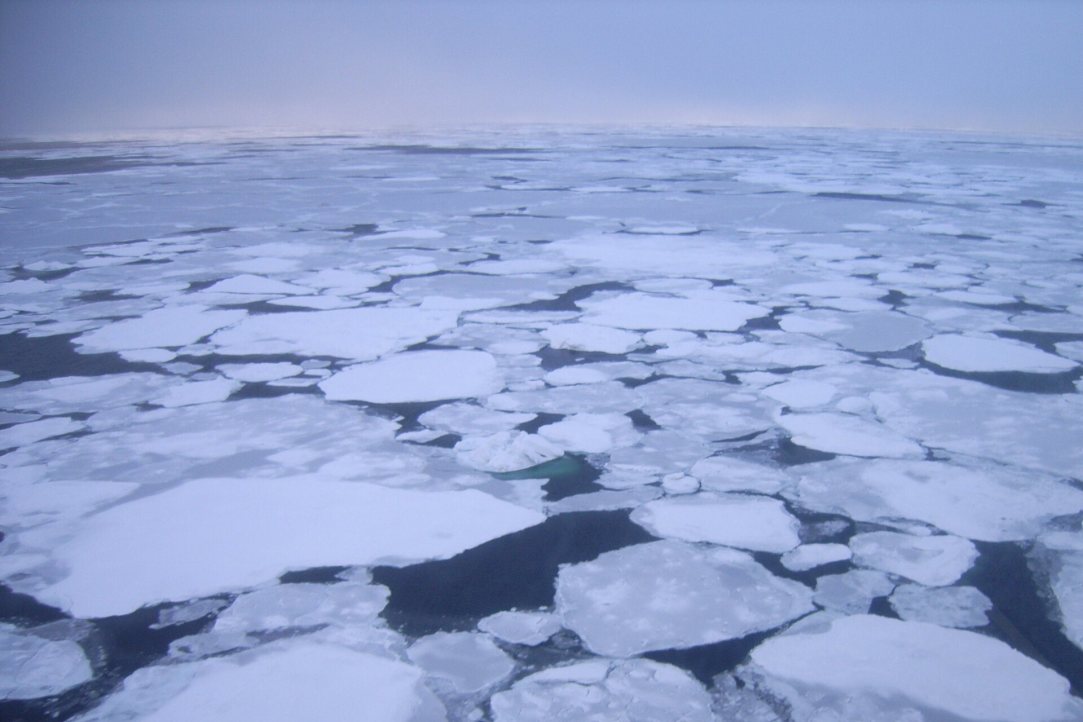Salt Eats Ice: Researchers Name the Reasons Behind Underwater Permafrost Vulnerability

A team of researchers has studied ice-containing sediment on the East Siberian Arctic Shelf. The researchers proved that the melting of underwater permafrost is caused not only by the warming of sea water, but also by migrations of its salt ions (mostly NaCl). The HSE News Service reports on this and other studies conducted by the HSE Institute of Ecology.
In the late 1990s–early 2000s, a team of Russian researchers led by Igor Semiletov, Head of FEB RAS Pacific Oceanological Institute Laboratory for Arctic Research and Academic Supervisor at the HSE Institute of Ecology, and Natalia Shakhova, Chief Research Fellow at the Institute of Ecology, embarked on research aimed at discovering the impact of underwater permafrost degradation on the volume of methane emission from the bottom sediment of the Russian Arctic shelf into the atmosphere. The researchers discovered an abnormal share of methane in the water and air of the seas of the East Arctic, which contain over 80% of all sub-sea permafrost.
After the results of the study were published in Science, it has become clear that the earlier understanding of sub-sea permafrost as continuous and stable needs to be revised. From 2011–2015, the boreholes that were made in 1982–1983 on the Laptev Sea shelf were re-drilled, and researchers received the first reliable data on the speed of sub-sea permafrost’s vertical degradation. They established that these speeds are many times higher than they would be from heat conduction only, as previously believed. The authors proposed that this may be due to the diffusion of salt going down from seawater to the desalted sediment of underwater permafrost. Below are the results of one of the most recent studies carried out on this topic with a team of researchers headed by Evgeny Chuvilin of the Skolkovo Institute of Science and Technology.
The team of researchers studied ice-containing sediment on the East Siberian Arctic Shelf. They proved that the melting of sub-sea permafrost is caused not only the warming of seawater, but by the migration of salt ions in it (mostly NaCl). The expedition also confirmed the powerful methane streams from bottom sediments in the East Siberian Sea and the Laptev Sea previously discovered by the research team.
These observations emphasize the need to revise existing views of the condition of sub-sea permafrost, which is potentially more susceptible to melting than its counterpart on the earth’s surface. The results of the study were published in Marine and Petroleum Geology. Furthermore, an earlier paper by the same authors, which was published in Nature Geoscience, demonstrates that the temperature of sub-sea permafrost in the upper 100-m layer of the East Siberian Arctic Shelf is about 10˚C higher than the temperature of surface permafrost.
The East Siberian Arctic Shelf is a store of natural hydrocarbons and a strategically important region for the development of oil and gas deposits, but at the same time, it is a complex natural territory that requires a special approach and study.
In order to avoid environmental and financial damage, it is necessary to know before drilling whether permafrost is present under the water, what size it is, and what its composition and properties are. Geological work includes risky and expensive drilling and soil sample retrieval, which is why the majority of existing information on the condition of sub-sea permafrost is based on data from local geophysical studies (without drilling and damaging the studied matter) and mathematical modelling.
In turn, the results of modelling depend on the input parameters, which are not always reliable or precise. This means that practical field research is needed. A team of Russian researchers carried out such a study with METER Group, KD-2 and KD-2 Pro cylindric sensors. They drilled three parametric boreholes (with a core drilling depth of 50–60 m). Two boreholes were on the Laptev Sea shelf, while the third one was in a sea lagoon adjacent to the Buor-Khaya Gulf. The team also carried out detailed sea research in the East Siberian Sea, the Kara Sea and the Laptev Sea.
The data testifies to the presence of expanded sub-sea ice-containing permafrost ranging from the East Siberian Arctic Sea Shelf to the continental slope located about 1,000–1,500 km from the shore, with the exception of deep-water regions (the Vilkitsky Strait, which has a sea depth of about 230 m). The researchers discovered three key types of sediment horizons.
The upper few meters consist of unfrozen soft clay and have a thermal conductivity of 0.8–1.1 W (m∙K) and a salinity of 0.5–1.0%. Moisture levels decrease with depth from 90% to 45%.
Deeper sediments consist of unfrozen salted aleurite and fine-grained sands. Initially, there was a permafrost part, but seawater warming and salt diffusion in the natural permafrost about 9,000 years ago caused the ice-containing sediment to start degrading under the water. The thermal conductivity of this sediment varies from 1.4 W (m∙K) in clay- and mud-rich samples to 2.1 W (m∙K) in fine-grained sand. The salinity of the sediments varies from 0.4% to 1.0%.
Below these is a transitional area, followed by a third layer consisting of frozen ice-containing sediment. These include different types of sand soils. Frozen ice-containing sediment features a higher thermal conductivity of 2.2–3.2 1.4 W (m∙K), a soil density of 1.8–2.0 g/cm3, and humidity over 25–30%.
This means that the thermal conductivity of frozen soils is about 45–60% higher than that of their unfrozen equivalents. The reasons for this are lower salinity (~0.1–0.2%), a higher ice percentage and moderate levels of unfrozen water. The expedition also discovered powerful methane streams from bottom sediments in the East Siberian Sea and the Laptev Sea.
The researchers believe that the new data on the condition of sub-sea permafrost proves that it is potentially more susceptible to melting than its counterpart on the surface.

Igor Semiletov
‘The new data from the expedition and the results of laboratory experiments confirm that progressive degradation of ice-containing sediment on the Arctic Shelf is happening both due to the warming of sea water and the migration of its salt ions (mostly NaCl) in the ice-containing underwater permafrost,’ explained Igor Semiletov, one of the paper’s authors.
The authors believe that the new data could help improve existing mathematical models of sub-sea permafrost degradation and the destabilization of gigantic stores of Arctic shelf hydrates, accounting for the fast diffusion of salt from seawater to the frozen-melted bottom sediment on the Arctic shelf.
Another important area of research concerns the nature of sources of massive methane bubble discharges. These studies are conducted together with strategic partners from Stockholm University—Prof. Örjan Gustafsson (member of the Royal Swedish Academy of Sciences and the Nobel Committee for Chemistry) and his team. The researchers measure the methane’s stable isotopes and radiocarbon age. A recent joint paper on this topic, which was published in the prestigious PNAS journal, demonstrated the considerable role of thermogenic methane release, which is a sign of the high potential for geological methane release on the Russian Arctic Shelf. A paper on the climatic role of this process will be published in the next issue of the journal.
Complex studies of the climatic role of sub-sea permafrost degradation and shelf hydrates have been carried out by the Human Capital Multidisciplinary Research Centre at the HSE Institute of Ecology. These studies will be further developed as an international themed programme at the Centre. New knowledge will be used to mitigate the adverse effects of geo-ecological catastrophes and their impact on ecosystems and the global climate, said Boris Morgunov, Director of the HSE Institute of Ecology.
